Draper and Duffin Creek Archaeology

Iroquoian Arrowhead Collectors at the 16th Century Draper Site
One never knows what unusual artifacts are to be found in the collections at sites such as Draper and what new insights will result from their study.
Fittingly, I continue this blog series with another extraordinary set of findings we recovered from our excavations at the Draper site in 1975 and 1978. This involves 10 projectile points which predate the occupation of the Draper Village by many centuries. Indeed, one of these projectile points may be 8,000 to 8,900 years old, while some are several millennia old.

Neutral Indigenous Peoples Living at the Draper Site
At Draper, almost 98% of the chert used to make arrow points, scraping tools, and other cutting and scraping instruments were made from Onondaga chert. This chert was found along the north shore of Lake Erie in an area occupied and probably controlled by the Neutral. More recent research on Draper has revealed that there are other artifacts characteristic of the Neutral People. One of these was a bead made from the toe bone of a deer.
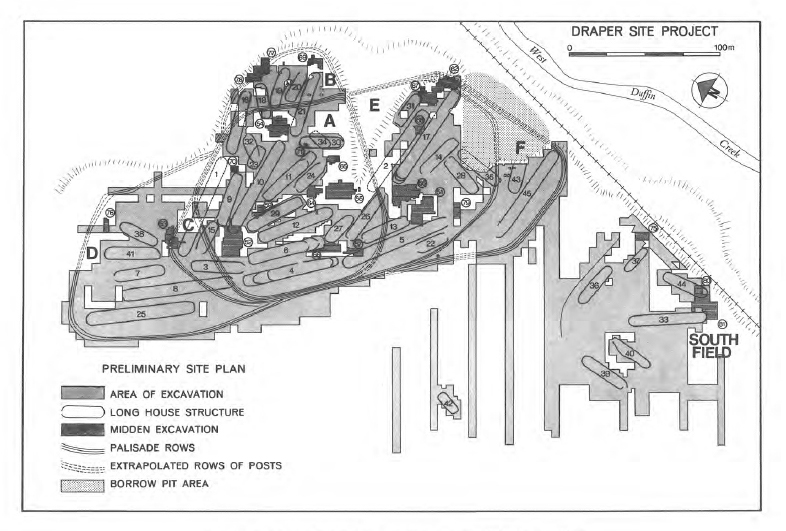
The Draper South Field
We discovered 7 houses about 40 metres south of the Draper Main Village. Two of these houses overlapped, with one being shorter. I believe the latter may have been lived in by the workers who built the rest of the houses. There was eventually a total of 6 houses separated from the Main Village by a fence, and likely occupied at the same time.

The White Site
Tripp noted 10 characteristics which suggested that the White site was a farm hamlet, occupied seasonally over many years. Among these unusual features were an absence of village planning and defensive planning in the placement of houses, which on the other hand was so prevalent at Draper.
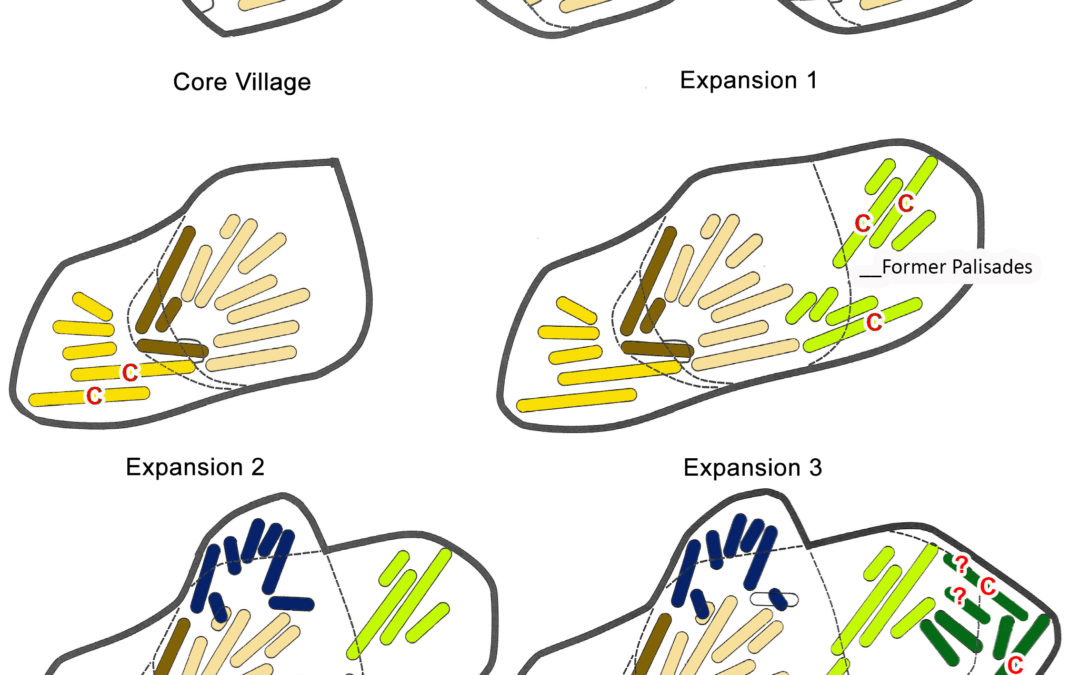
The Draper Site: Special Structures, Chiefs’ Houses
We know from the historical documents of the Historic Huron that these types of houses existed. We can use this data to help us better understand the occupants of the Draper site. It is noteworthy that as the village expanded, these long longhouses were situated on the outer edges of the expanded part of the village. Such a pattern of placement of chiefs’ houses—to potentially assist in village defenses—may be unique to the Draper site.
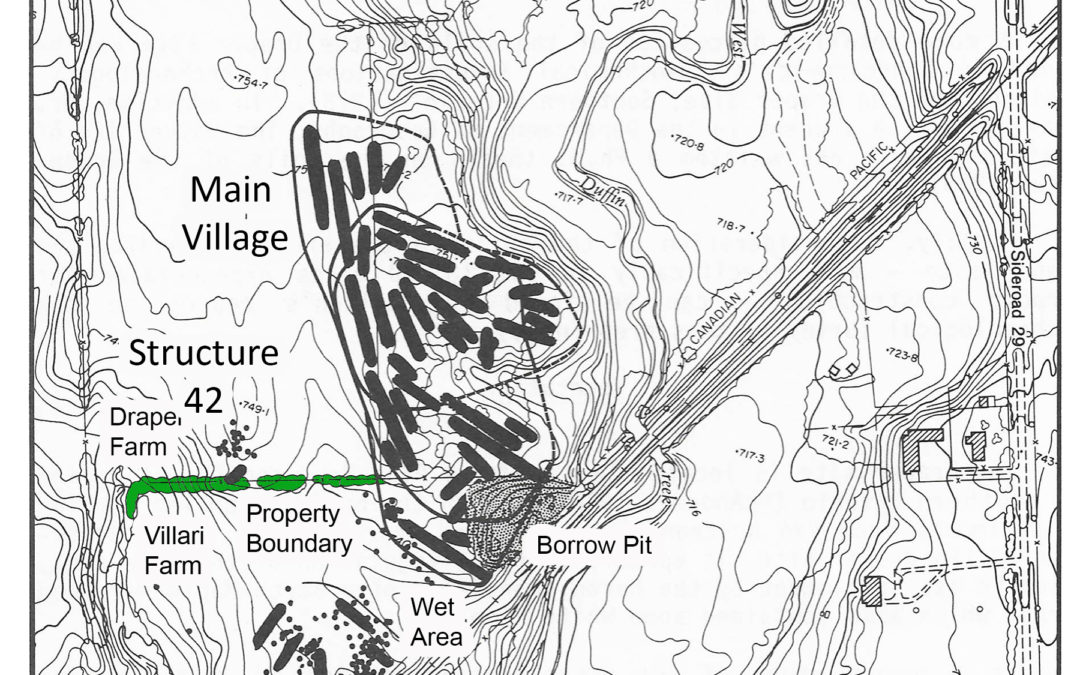
The Draper Site: Special Structures, Visitors’ Houses
One of the most intriguing aspects of the Draper Site was that it began as a typical small community of about 8 longhouses in a palisaded village, 1.2 hectares in size. Amazingly, it expanded five times to become a 3.4-hectare village comprised of 39 houses, most of which were occupied at the same time, with an estimated population of 1,800 people. Also, quite interesting was that not all of the structures we discovered were longhouses. There were three which I believe were unique structures used to house visitors to the Draper village. We know from historical documents written by early explorers and missionaries…

Draper Site Excavations – Trials and Tribulations
One of the challenges in undertaking the excavations at the Draper site in 1975 and 1978 was ensuring the safe operation of the dig, the security of the excavations, and providing accommodations and meals for our crews which at times numbered up to 60 people. These are just a few of the more memorable events at Draper, which remind me of the challenges of directing the size of crews we needed to complete the largest and most significant excavations of an Iroquoian village ever undertaken in the province. Still, one of the highlights of my career I feel fortunate to share and contribute to our archaeological history.
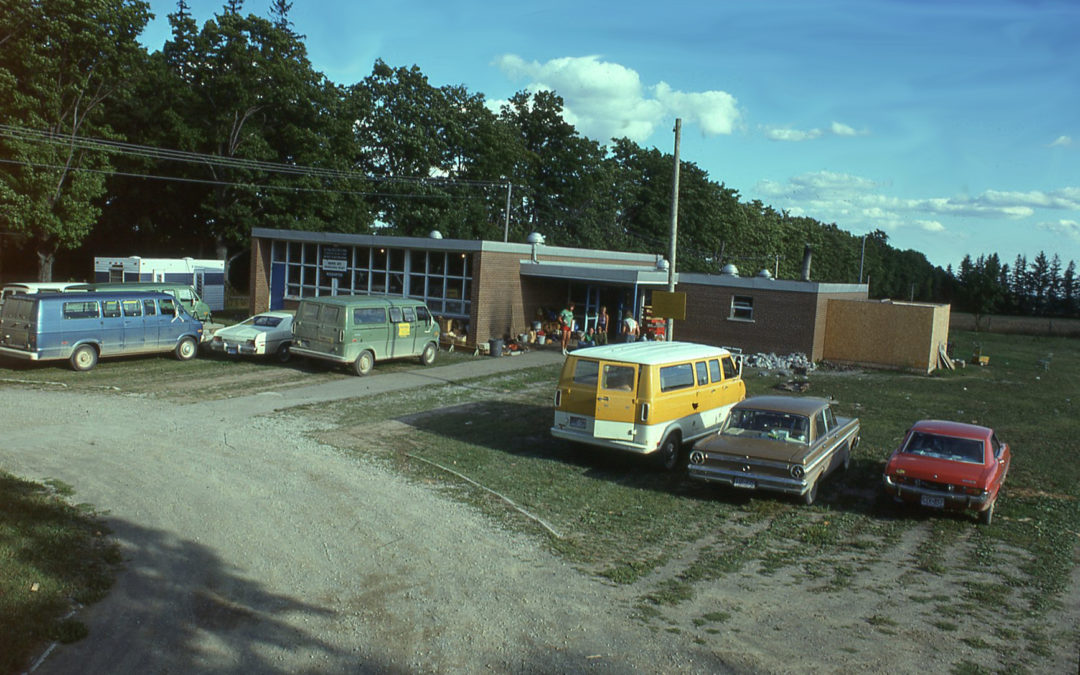
Draper Site Field Laboratories and Crew Accommodations
One of the advantages of our field work at the New Toronto International Airport from 1975 to 1979 was that we had the use of some of the buildings which had been expropriated by the Federal Government. Most important was the two-room Glasgow schoolhouse a few km north of Draper. This became our headquarters for the large crews in 1975 and 1978 . . . By undertaking major portions of the processing of the artifacts and information recovered in the field, we were able reduce the amount of such work to be handled back at the laboratories at the University.
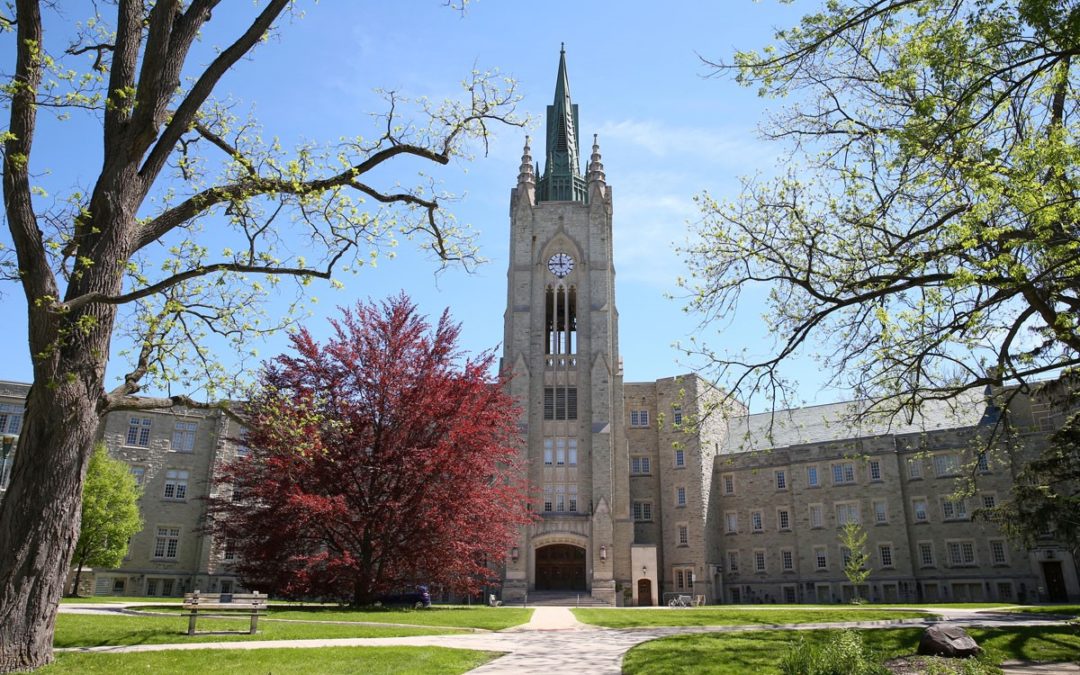
The 1975 Excavations at the Draper Site: Problem Solved, Opportunity Created
One of the aspects of planning the excavations of the Draper Site in 1975 was negotiating a contract between The University of Western Ontario and the National Museum of Man . . . Another life-changing event, which ultimately lead to another incredible opportunity to significantly expand my exploration of Ontario’s rich archaeological history. Embracing new uncharted territory enhances our journey on all levels and, in a way, pushes us to use more of our experience and skills for the greater good.

Contamination of Living Floors under Longhouses at the Draper Site
We now delve into the challenges of recognizing the potential contamination of living floors under the longhouses. The excavations of Houses 2 and 5 at Draper provide a cautionary tale that if we are to explore the living floors of undisturbed longhouses, we must be aware of the possibility of contamination of these deposits from activities of earlier occupations. This work and the accuracy of it is paramount to us continuing to learn more about our Ontario history and those who lived here before us.